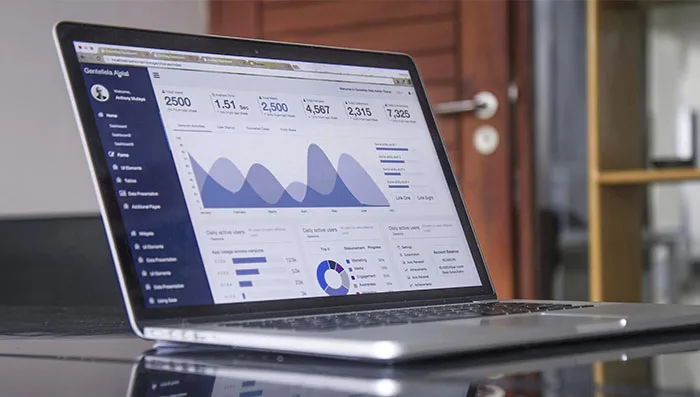Home » Macro Economic Overview » Nonstore retailers
Nonstore retailers
Total Sector Spending
Overall spending trends across an industry sector
What's the story behind the data?
Nonstore retailers—comprising e-commerce giants, digital media platforms, and virtual service marketplaces—continue to exhibit strong resilience in consumer discretionary cycles. According to Facteus data, total sector spending remained solidly positive throughout the past year, peaking in January 2025 (+11.7% YoY) before tapering to more modest gains by June. This pattern aligns with broader macro trends: consumer spending has steadily migrated toward digital-first platforms, particularly among younger and higher-income demographics.
Our income-segment view shows a strong upward skew: consumers earning over $100K annually are significantly outspending other cohorts, with the $100K–$125K bracket leading at +4.6% YoY. Lower-income brackets have slightly negative or flat growth, likely reflecting inflationary pressures and reduced discretionary capacity. Meanwhile, generational trends confirm digital-native preferences: Gen Z and Millennials posted the highest growth in nonstore retail spending, while Boomers actually declined (-0.5%).
This generational divergence validates broader e-commerce trends: Gen Z is adopting online-first shopping habits not only for goods (Amazon, Etsy) but also for digital services and subscriptions (YouTube, PlayStation, Steam). Amazon’s enduring dominance is confirmed in both market share (hovering near 80%) and stable AOV leadership. Despite minor turbulence in early 2025, average order value has held steady for major platforms.
Notably, Facteus transactional data continues to mirror broader e-commerce benchmarks reported by agencies and earnings calls. If anything, our data may slightly overindex high-frequency, mid-ticket digital purchases (e.g., gaming, entertainment) that may be underrepresented in shipping-based census data.
Implications by Audience
FP&A / Strategy Teams
- Shift inventory forecasting models to emphasize digital sales and micro-transactions.
- High-income and Millennial segments are the engine of growth—optimize pricing and subscription bundles accordingly.
- Use real-time sales telemetry to time seasonal promotions, especially post-holiday periods where growth spikes are consistent.
Marketing and Brand Teams
- Total Sector Spending
Growth remains robust across most months, peaking in January at nearly +12%. Seasonal pullback was mild, with positive YoY growth sustained through June except for a brief dip in February. This confirms resilience in digital shopping and digital content purchases. - Sector Spending by Income
Sharp stratification: households earning $100K+ are driving the majority of growth. Sub-$50K households saw a slight decline. This mirrors broader consumer behavior where discretionary digital purchases (subscriptions, non-essentials) are less resilient in lower-income groups. - Sector Spending by Generation
Gen Z (+5.8%) and Millennials (+3.9%) lead the charge, with Gen X lagging slightly and Baby Boomers declining. This divergence reinforces that digital retail is primarily a generational play. - Top Brands by Market Share
Amazon holds a commanding 80%+ share. Apple and Microsoft trail in distant second and third positions. YouTube and PlayStation exhibit niche but rising share—a sign that entertainment-driven spending is central to nonstore retail. - Top Brands by AOV
Amazon and YouTube maintain high and stable AOVs, averaging $35–$38. PlayStation saw a temporary spike in late 2024. These values confirm platform maturity and predictable monetization—important metrics for investors and operators.
Investors
- Sustained market share concentration around Amazon raises antitrust and margin compression questions—track long-tail brand performance.
- Demographic momentum (Gen Z + HHI $100K+) suggests upside in platforms catering to this dual segment.
- Transaction velocity and AOV stability offer leading indicators ahead of earnings for top brands.
Top Brands by Market Share
Leading brands ranked by market share within sector
Trends + Insights
- Total Sector Spending
Growth remains robust across most months, peaking in January at nearly +12%. Seasonal pullback was mild, with positive YoY growth sustained through June except for a brief dip in February. This confirms resilience in digital shopping and digital content purchases. - Sector Spending by Income
Sharp stratification: households earning $100K+ are driving the majority of growth. Sub-$50K households saw a slight decline. This mirrors broader consumer behavior where discretionary digital purchases (subscriptions, non-essentials) are less resilient in lower-income groups. - Sector Spending by Generation
Gen Z (+5.8%) and Millennials (+3.9%) lead the charge, with Gen X lagging slightly and Baby Boomers declining. This divergence reinforces that digital retail is primarily a generational play. - Top Brands by Market Share
Amazon holds a commanding 80%+ share. Apple and Microsoft trail in distant second and third positions. YouTube and PlayStation exhibit niche but rising share—a sign that entertainment-driven spending is central to nonstore retail. - Top Brands by AOV
Amazon and YouTube maintain high and stable AOVs, averaging $35–$38. PlayStation saw a temporary spike in late 2024. These values confirm platform maturity and predictable monetization—important metrics for investors and operators.
Top Brands by AOV
Leading brands ranked by average order value within sector
This macro sector analysis provides detailed insights into economic trends and consumer behavior patterns. The visualizations below are derived from real-world transaction data and economic indicators.
Unlock additional content
Get immediate access to the full data set.
Sector Spending by Income Bracket
Industry sector spending patterns by household income level
Sector Spending by Generation
Industry sector spending patterns by generational cohort
Ready to Get Started?
Discover how to access personalized data and insights in a one-on-one session with our team!




